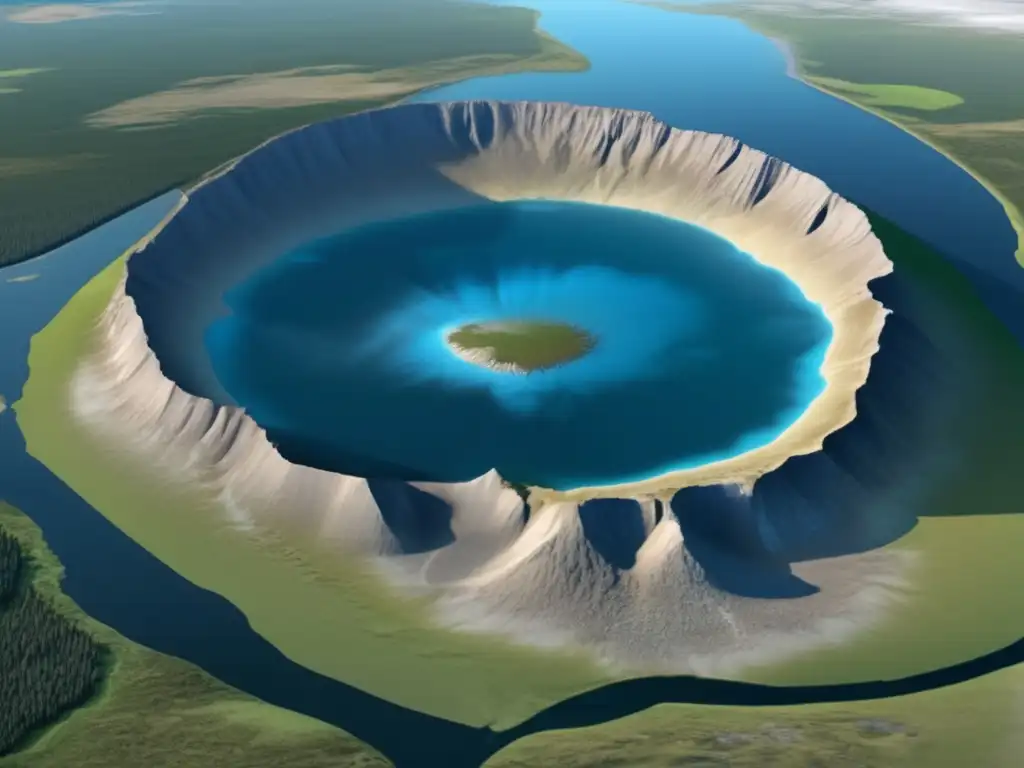The Sudbury Basin: Clues To A Massive Impact Event

Introduction
The Sudbury Basin is an ancient geological structure located in Ontario, Canada. This basin, estimated at around 250 million years old, is particularly interesting to asteroid enthusiasts as it may hold clues to one of the largest impact events in Earth's history. This article will explore the Sudbury Basin and its significance to asteroid impacts.
The Formation of the Sudbury Basin

The Impact Hypothesis
The Sudbury Basin is believed to have formed as the result of a massive meteorite impact on the Earth's surface. The impact hypothesis suggests that around 1.85 billion years ago, an asteroid or comet collided with the Earth, releasing tremendous energy and creating a shock wave that shattered the surrounding rocks. The impact would have created a large crater, estimated to be around 200 kilometers wide. Over time, sediments and molten rock filled the depression, forming the Sudbury Basin as we know it today.
Evidence of an Impact
While the impact hypothesis is widely accepted, scientists have uncovered several lines of evidence that support this theory. The most compelling of these is the presence of distinctive rocks known as impact breccias. These rocks are composed of angular fragments of pre-existing rocks cemented together by fine-grained material. Impact breccias are typically found near the center of impact craters and are thought to form during the initial stages of the impact event.
Another line of evidence comes from the discovery of shatter cones. These distinctive patterns are formed by the shock wave generated by an impact event. Shatter cones are typically found in the rocks immediately around the center of the impact and are one of the best indicators of a meteorite impact.
The Environmental Impact
The Sudbury Basin impact would have been a catastrophic event for the Earth's environment. The impact itself would have caused widespread devastation, destroying anything in the immediate vicinity and causing massive fires. The resulting shock wave would have sent seismic waves rippling across the planet, causing earthquakes and volcanic eruptions.
However, the most significant impact of the Sudbury Basin event may have been the release of vast amounts of sulfur into the atmosphere. When the meteorite struck the Earth, it vaporized large quantities of rock and created a massive plume of molten material. As this material cooled and settled back to Earth, it released sulfur-bearing gases into the atmosphere. These gases reacted with water vapor to form a sulfuric acid mist, which would have rained down on the Earth's surface, creating an environmental disaster that lasted for centuries.
The Sudbury Basin Today

Geological Importance
The Sudbury Basin is now recognized as one of the most important geological structures on the planet. It is a treasure trove of information about the early history of the Earth and the impacts that have shaped our planet over the millennia. The rocks and minerals found in the Sudbury Basin provide valuable insights into the processes that were at work during the formation of the Earth and the evolution of life.
Economic Significance
The Sudbury Basin is also of great economic importance. The region is home to one of the world's largest nickel deposits, which is thought to have formed as a result of the impact that created the basin. The mining industry has played a significant role in the development of the local economy, providing jobs and revenue to the community.
Frequently Asked Questions

-
What caused the Sudbury Basin to form?
The Sudbury Basin is believed to have formed as a result of a massive meteorite impact on the Earth's surface.
-
What evidence supports the impact theory about the Sudbury Basin?
The presence of impact breccias and shatter cones are strong indicators that an impact event occurred.
-
Was the environmental impact of the Sudbury Basin event significant?
Yes, it released large amounts of sulfur into the atmosphere, causing widespread environmental damage that lasted for centuries.
-
Why is the Sudbury Basin economically important?
The region is home to one of the world's largest nickel deposits, which was likely formed as a result of the impact that created the basin.
-
What can we learn from the Sudbury Basin?
The Sudbury Basin provides valuable insights into the early history of the Earth and the processes that have shaped our planet over time.
Conclusion
The Sudbury Basin is a fascinating geological structure that offers valuable insights into the impact events that have shaped our planet. While the event that created the basin was catastrophic in its scope, it has left behind a legacy that we can learn from and appreciate today. The Sudbury Basin is a reminder of the immense power of the universe and our place within it.
If you enjoyed this article, please share it on social media. And don't forget to subscribe to www.asteroidrealm.com for more great content about asteroids and their impact on our world.
Additional Resources

- The Sudbury Basin: A Rich History
- The Sudbury Impact Structure: A Review of Current Research
- Ancient asteroid collision created our moon and Earth's balance
 The Manicouagan Reservoir: Traces Of An Ancient Asteroid Strike
The Manicouagan Reservoir: Traces Of An Ancient Asteroid Strike Fractured Earth: Asteroid Impacts And Their Geological Imprint
Fractured Earth: Asteroid Impacts And Their Geological Imprint The KT Boundary: A Geological Marker Of Catastrophe
The KT Boundary: A Geological Marker Of CatastropheIf you want to discover more articles similar to The Sudbury Basin: Clues To A Massive Impact Event, you can visit the Asteroid Impacts category.
Leave a Reply

Articulos relacionados: